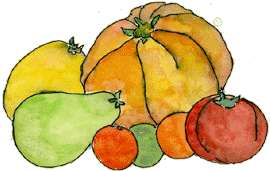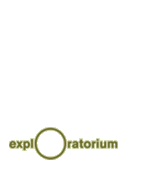
|
|
When you think of “extinction,” you probably don’t
think of tomatoes and lettuces. And it’s true that our
grocery store produce sections aren’t populated by endangered
species. But what about your great-grandmother’s special
heirloom tomatoes, brought from the Old Country and gardened
in your family’s backyard for generations? If no one collects
those seeds, plants them, and tends to them the following year,
Great Grandma’s tomato legacy will die out.
|

|
|

|
The loss of Granny’s heirloom tomato might
not seem tragic at first. We have plenty of tomatoes in the world,
why worry? But the real question to ask is not how many tomatoes
we have, but how many kinds there are. Your great-grandma’s
are their own special kind, or variety, meaning they display the
traits that she and her family of farmers like best. That trait
might be the lovely yellow and orange colors you see in some heirloom
tomatoes in the market or a less-visible resistance to drought
and disease. These traits arise from specific genes or combinations
of genes present in a tomato plant’s genome.
It would be nice if we could create genes like these and put them
into tomatoes. But the fact is that we don’t know enough
about genetics to invent new genes, so we rely on nature to supply
them. Therefore, if the unique complement of genes in Granny’s
tomatoes disappears, it’s gone forever.
Granny probably developed her tomato variety in the same way as
hundreds of thousands of farmers before her. As you’ll see,
a decision about whether to plant her seeds or the commercially
developed ones from the garden store has implications beyond the
color of your tomatoes.
|
|
|
|
|
How did the uninviting grass on the left become the sweet
corn we love today? Learn how plants have changed over time
in
Garden
Variety
.
|
Agriculture Relied on Seed Saving
Nearly all of the plants we use for food today trace their roots
back to wild ancestors that were quite different. (To learn the
stories of some of these plants, see
Garden
Variety
). Corn, for example, began as a grass called
teosinte
—no
cob, no husks, and kernels not worth writing home about. The sweet
corn we know today is a result of farmers over thousands of years
planting seeds, studying the results, and saving and sowing seeds
from plants they liked best. In this way, they perpetuated and
magnified traits such as thick seed stalks (which became cobs)
and bigger, softer seeds (which became kernels). Now, in Mexico,
the American Southwest, and other places where teosinte originated,
there are thousands of corn varieties, developed by local farmers
and gardeners who have fine-tuned the plants to their desires and
growing environments.
The story is similar for most of the plants we use in our gardens:
Hundreds of thousands of varieties exist, developed by individual
growers. Saving seeds has been central to the creation of these
varieties. It is still the way farmers and gardeners in many parts
of the world do their work. But things have been changing over
the last century.
|





